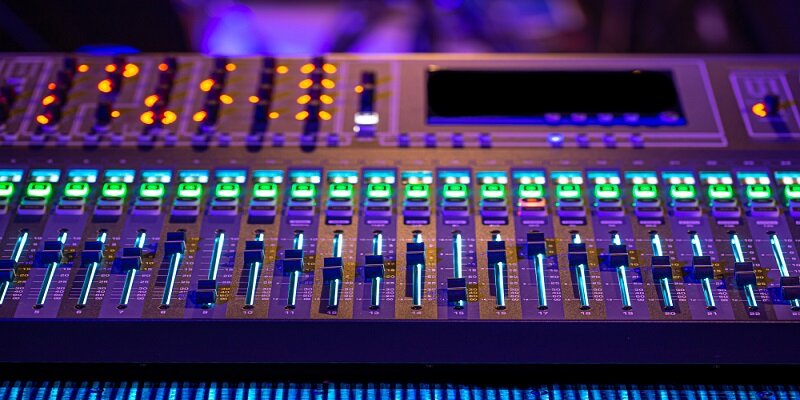
Take the help of this simple guide to understand everything there is related to sound equalizers and how to use them.
Listening to music is an experience that is very subjective, much like the way food tastes to different people. People often have specific tastes, regardless of whether they are casual listeners or serious audiophiles. A number of us choose to improve the flavor of our food by adding a dash of a spice such as cinnamon, salt, pepper, or salsa. The same principle applies to sound, and the equalization adjustments are what allow for that degree of personalization.
Bear in mind that you are the only one who can know and judge what sounds good to your ears, so have faith in what you hear and enjoy it.
Having said that, let’s learn more about an Audio Sound Equalizer so that we may have a better grasp.
What Do You Mean by an Equalizer?
If you have a music player app on your phone, it undoubtedly has a basic graphic equalizer that you can use to adjust the sound to your taste. If this is the case, you are probably already aware of the fundamental idea of equalization. To sculpt the frequency content in order to make things sound “better,” equalization is used in music production. However, rather than being applied to the entire track, it is applied independently to individual elements within it (drums, bass, guitar, keys, etc.) in order to get the best and most desirable audio results.
When to Make Changes to the Equalizer or Use the Equalizer?
Sometimes the purpose of using a stereo audio equalization is less to improve the sound quality and more to make up for something that is lacking. Due to the fact that various manufacturers and kinds of speakers each have their own distinctive sound identity, an equalizer is required to assist in shaping and fine-tuning the output.
It’s possible that a pair of stereo speakers places too much focus on the lows and highs of the sound spectrum. Alternatively, there may be a frequency drop that requires leveling off before it can be used. In any case, the use of the EQ controls in an appropriate manner may enhance the overall sound without requiring a significant amount of additional work on the user’s part.
It is completely OK for the vast majority of individuals not to possess or make use of a real-time analyzer or equalizer. The easiest approach to learning how to modify a stereo audio equalizer is by ear, using one’s own personal listening preferences as a guide; nonetheless, it is helpful to utilize some audio test tracks in order to assist with the process.
Because everyone has a distinct view of what makes the finest sound, an equalizer has to be adjusted individually for each person using it. Just bear in mind that even little alterations might have a significant impact on the final result.
Playing with the Equalizer
An equalizer plugin may be seen in a broad sense as something comparable to a collection of volume controls. Each of these is responsible for determining the intensity. This is the intensity of a certain frequency range that can be set or adjusted. The gain control may be adjusted up or down to decrease or increase the loudness of a certain frequency and a range of frequencies close to it. The bandwidth control governs this range of frequencies, sometimes known as the ‘Q’ control.
When it comes to EQing, it is best to reduce frequencies rather than boost them. This is particularly true if the objective is to move one part out of the way of another. Since reducing sounds more natural and helps to retain headroom in the mix. Therefore, rather than increasing the volume of a voice by 3 decibels (dB) at a frequency of 2,00 (kHz). As an example, in order to make it audible over an accompanying guitar, reduce the level of the guitar by three decibels (dB) at the same frequency. Extreme adjustments might, once again, sound artificial and burn up headroom. So you’ll want to keep your cuts and boosts relatively tiny — just a few dB each way.
A clean, clear, and professional-sounding mix may be achieved via the well-judged use of EQ. More so than through any other procedure of audio engineering. On the other hand, an uneven and unprofessional mix can be achieved by the improper application of EQ. You shouldn’t become discouraged if your initial efforts at equalizing the sound seem uncomfortable and perplexing. If you keep at it, with enough practice and expertise, you’ll soon be able to cut and boost frequencies. Don’t give up!
Summing Up:
It’s perfectly safe and natural for you to use an EQ. When first beginning to learn how to EQ, it might be good, to begin with the settings. These come pre-installed on some programs and software. There is a purpose to the existence of EQ presets, which are often created by audio engineers. Choose your preferred setting as a good place to begin. And then proceed to make some little adjustments from that point forth. It is simpler than beginning from scratch, but you will still receive a customized sound profile as a result.
You might also like our TUTEZONE section which contains exclusive tutorials on making your life simpler by using technology.




